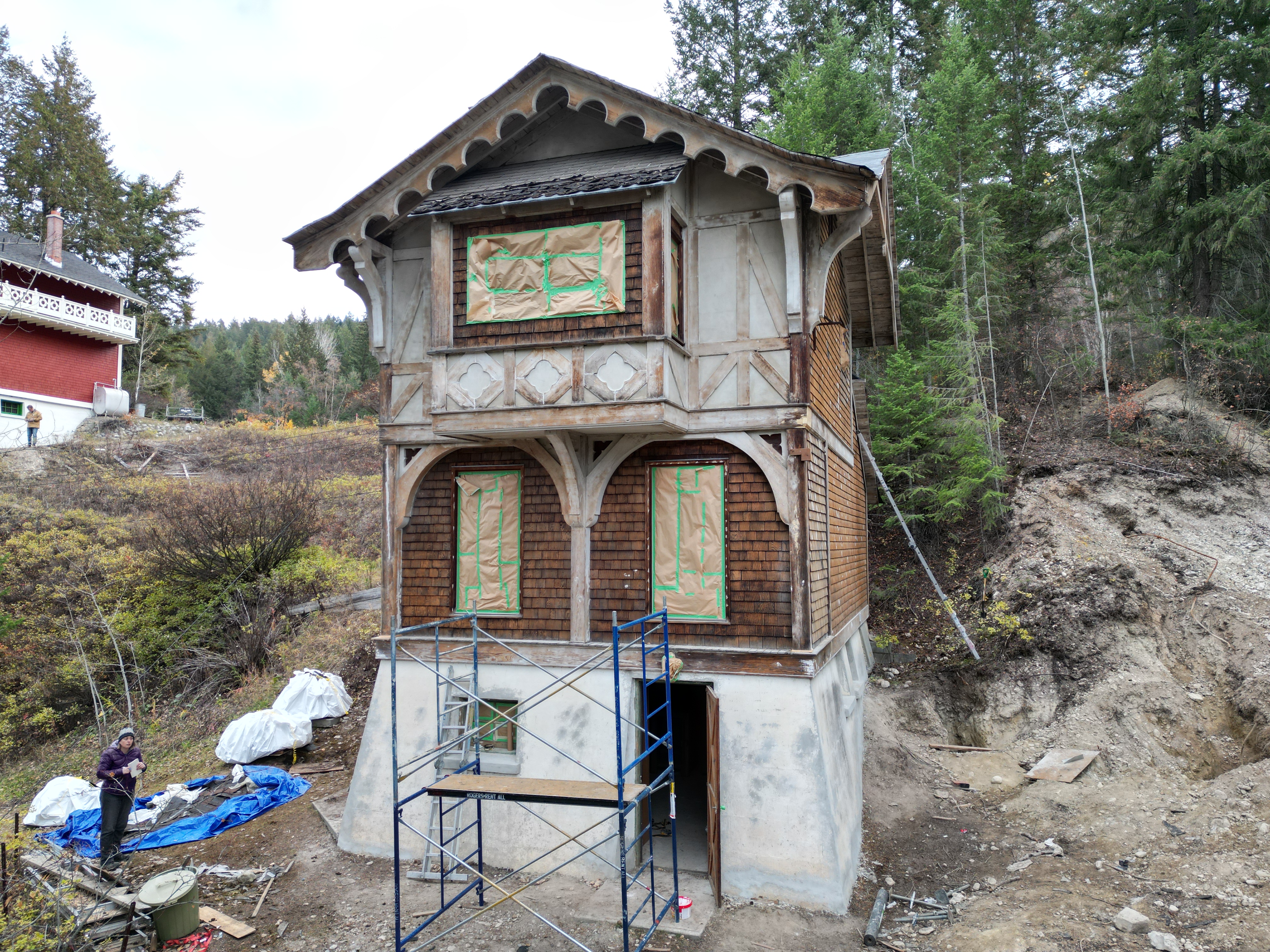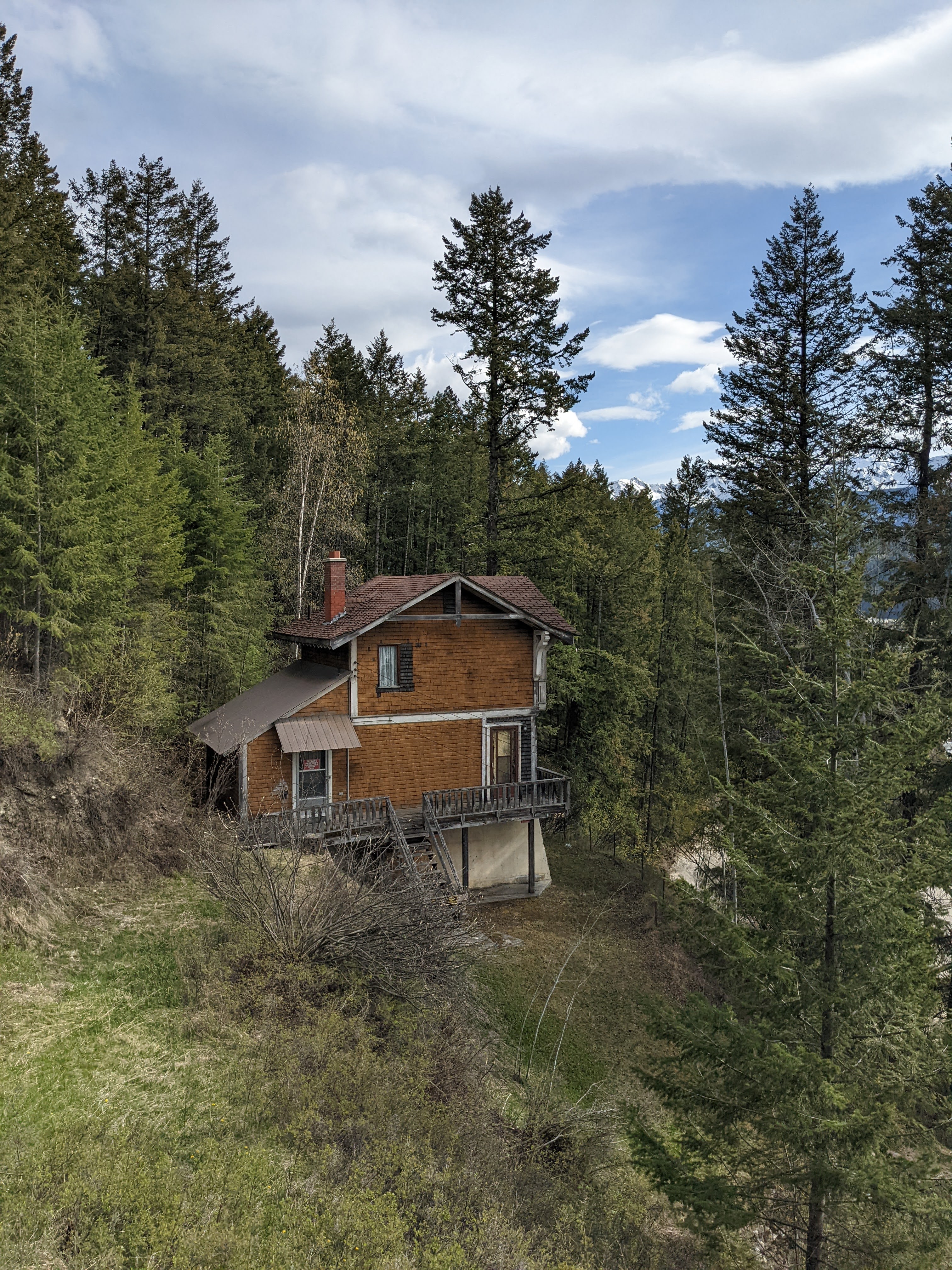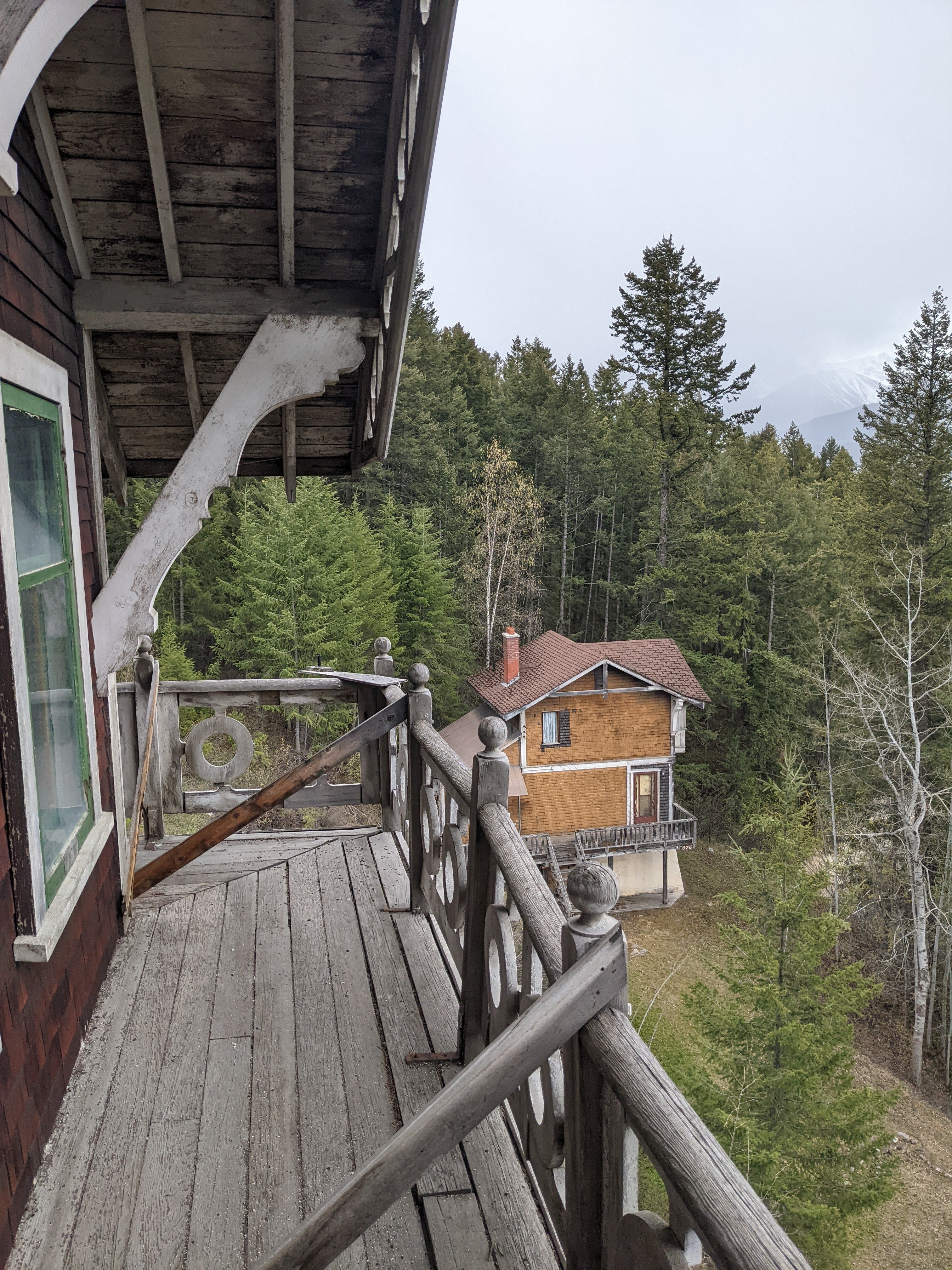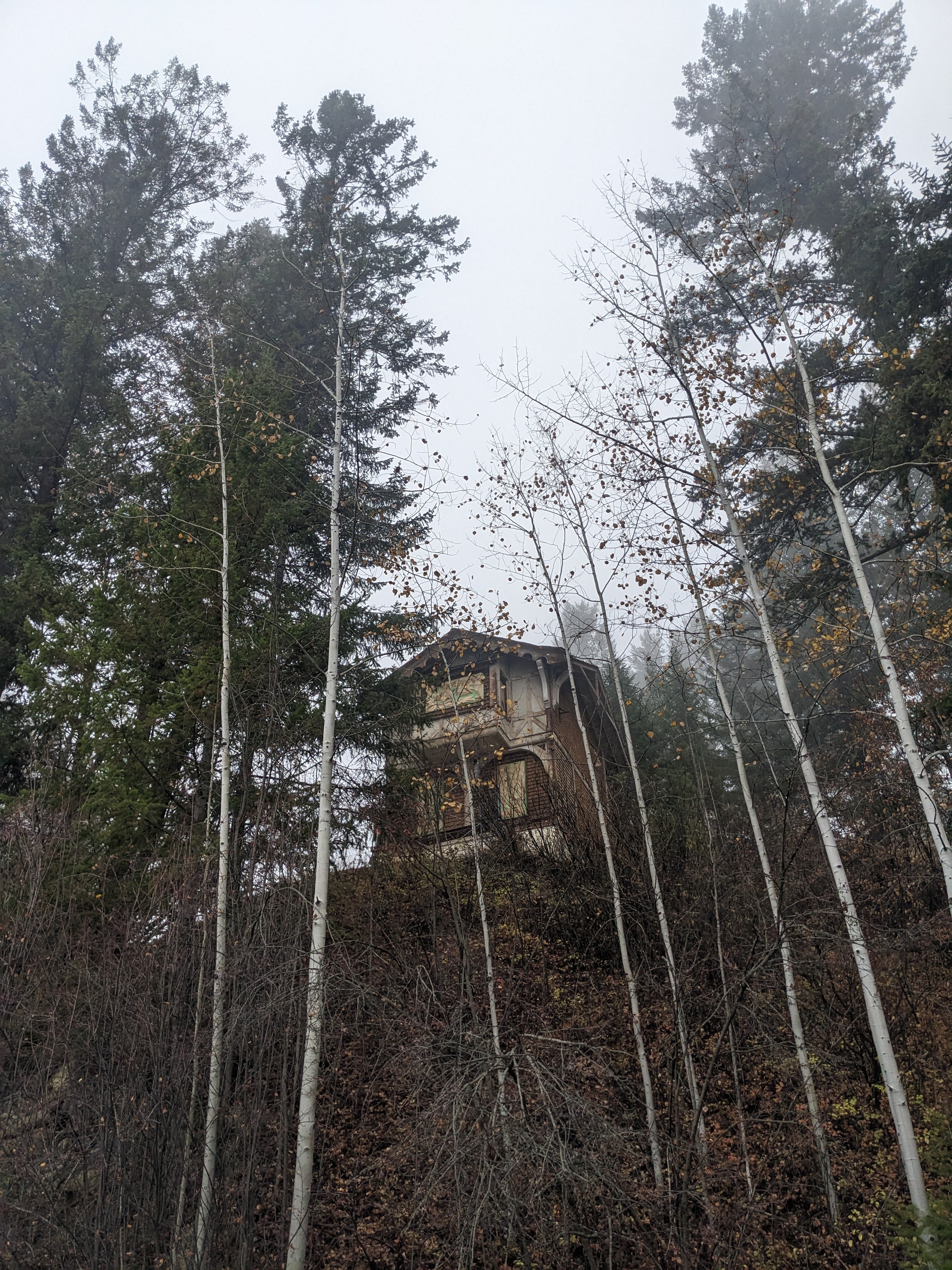
The Swiss Edelweiss Village is comprised of six chalets built between 1910-1912 by the CPR as permeant homes for six CPR-employed Swiss mountain guides. The residents included the brothers Edward Jr., Ernst and Walter Feuz, Christian Haesler Jr., Rudolf Aemmer and Christian Bohren with their families. It is currently unknown which guide lived in this chalet, but you can learn more about the history of the Swiss mountain guides and the other chalets by exploring all of the Swiss Edelweiss Village pages.
Moving into the Village
Noting the growing unrest among guides commuting to and from Switzerland, the Canadian Pacific Railway (CPR) built six chalet-style houses on the side of a hill near Golden, B.C [1,2]. The houses were for Swiss guides to reside in Canada permanently with the stipulation that they must be married. The CPR planned to eventually build more houses but never went beyond the first six that were constructed between 1910-1912 [1,2]. Even though the guides moved into these chalets when they were completed in 1912, the Edelweiss Village was not exactly ready for its new Swiss residents [2].
“The… guides along with their families packed what household goods they could, bade their farewell and began the journey. After weeks of travel, which was made more exhausting by marketing stops along the way, they finally arrived at the train station in Golden. There was no one to greet them, and there was no way to get up the hill to their new homes. They stood on the platform, some with feelings of sheer despondency realizing at that moment the enormity of their situation – namely, that the ease and familiarity of their Swiss lives had been traded for life in a remote place in the strange country of Canada. Martha, Edward’s wife, immediately burst into tears.” From D.L Stephen, page 76 [2].
The Swiss-style chalets that the families were promised were not particularly sturdy or well insulated, nor were they even Swiss in style! In addition the village was too far from downtown Golden to be convenient for the wives once they had moved in. Most of the families ended up moving out of the village after only a few years [2].
Life At Edelweiss
The guides who could live at Edelweiss needed to be married to live there, and signed onto a five year contract where they would be renumerated $5 a day for work. Living in the village was not free, it cost $15 a month per chalet to the CPR in rent. The CPR also stipulated that both the Swiss Flag and Union Jack be raised every morning above the highest situated of the chalets, Edward Fuez’ chalet [1]
For their rent, the guides and their families did not get much in return. The poorly constructed chalets were scorching hot in the summers and freezing in the winters. The CPR had wanted the Swiss to encourage other European immigrants to expand the village with farming, but as the hillside land offered subpar farming plots the guides were reluctant to encourage immigration. Edward, who had an unpleasant foray into farming earlier in life in Switzerland, emphasized to the CPR that their role in the company was as guides, in other words not as advocates for their agendas. The CPR was never able to expand the village as they had imagined [2].
This was likely a good thing because the guides and families who did move in said they “practically starved” [2:83]. The families had to turn to hunting meals of deer and goat, desperate for assistance Edward and his wife Martha wrote a letters to the CPR management describing their plight in the Canadian wilderness. With no reply from the company, they reached out to the Swiss consulate in Montreal pointing out that the employment contract with the guides had been broken as it promised they could make a year-round living in Canada. They were struggling in the village and could not make a decent living or life and wanted to return home to Switzerland [2].
While no one replied directly to the guides, the plea to the consultant must have worked because the company started paying the guides a year-round salary as they were promised [2]. While the families lived in Edelweiss village for several years, after the first five only Walter Fuez remained on the hillside.
In 1959 Fuez bought the six chalets and surrounding land from the CPR and modernized the properties. In time, most of the chalets were rented out [3]. Continue reading about the Edelweiss Swiss Village.
[Read previous].
Notes
This site is located on the traditional unceded territory of the Ktunaxa and Secwepemc peoples, and the chosen home of the Métis Nation Columbia River Society and other diverse Indigenous people. We acknowledge the many First Nations, Métis and Inuit who have lived in and cared for these lands for generations. We are grateful for the traditional Knowledge Keepers and Elders who are still with us today and those who have gone before us. We make this acknowledgement as an act of reconciliation and gratitude to those whose territory we reside on or are visiting.
This page was written in part by Dr. Ilona Spaar.
[1] Spaar, Ilona. Swiss Guides: Shaping Mountain Culture in Western Canada. The Consulate General of Switzerland Vancouver, Initial Print & Copy Center, Vancouver BC.
[2] DL Stephen. Eduard Feuz: A Story of Enchantment. RMB | Rocky Mountain Books, Calary, AB.
[3] Spaar, Ilona, author.






